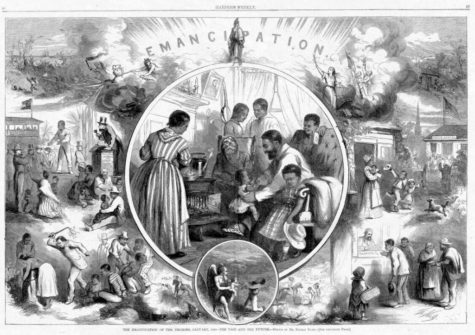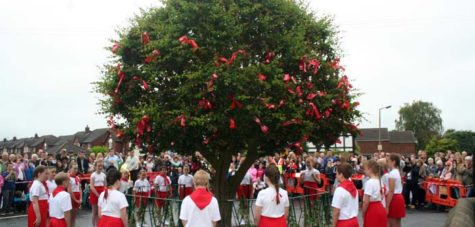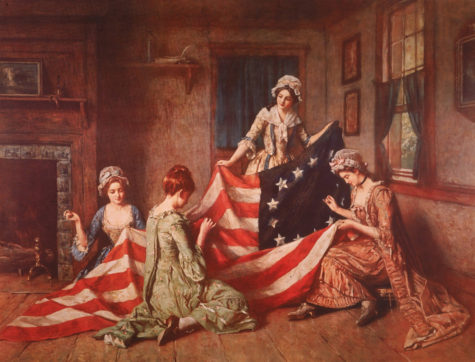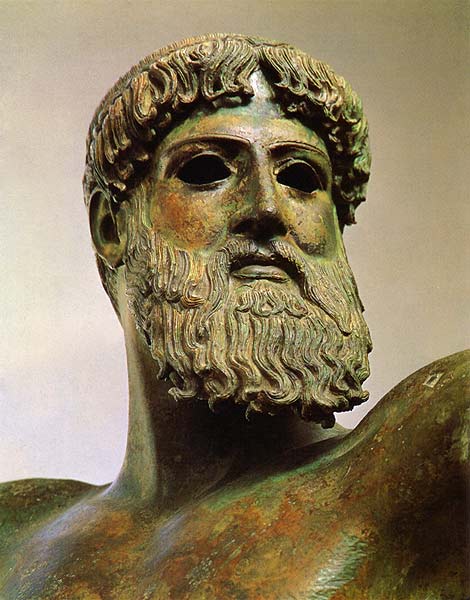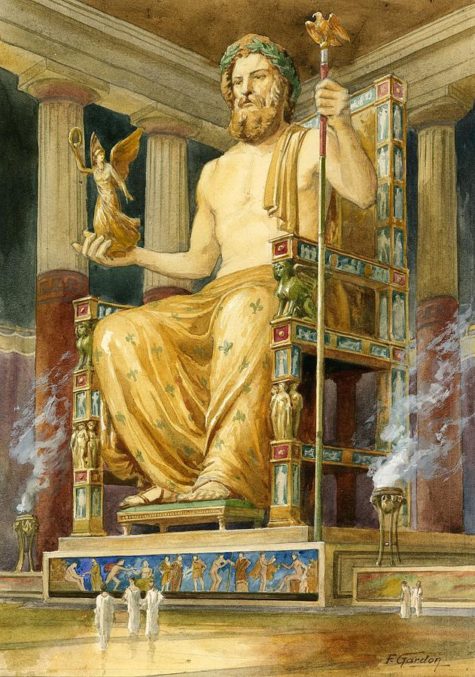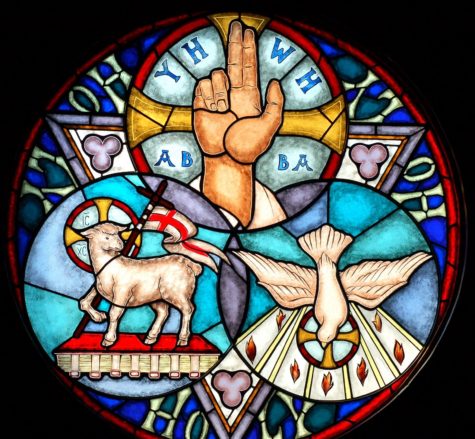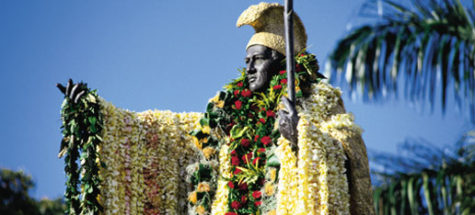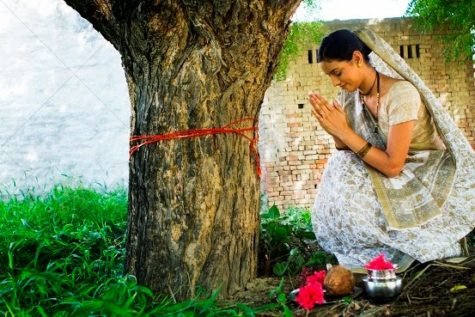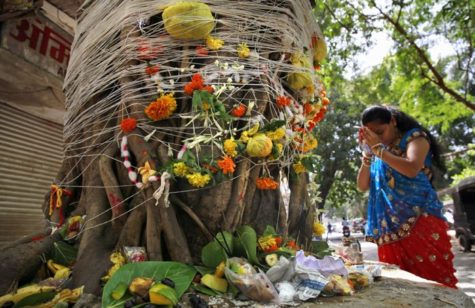Monthly Archives: June 2017
Emancipation Day, also called Juneteenth, celebrates the end of slavery and freedom on June 19, 1865 in eastern Texas and portions of the surrounding states. On that day, General Gordon Granger landed with Federal troops in Galveston, Texas, with the intention of enforcing President Abraham Lincoln’s Emancipation Proclamation of January 1, 1863.
The end of slavery was a gradual process, occurring as news of the proclamation reached outlying towns and states. Juneteenth was probably a shortened version of June 19th. A proclamation from the president stated that all slaves were now free, and the relationship between master and slave was now employer and employee:
“The freedmen are advised to remain quietly at their present homes and work for wages. They are informed that they will not be allowed to collect at military posts and that they will not be supported in idleness either there or elsewhere.”
Beginning the year following this Texas event, 1866, large celebrations to rival the Fourth of July began, including prayer services, inspirational speakers, reading of the Emancipation Proclamation, storytelling by former slaves, and traditional food and games. Soon neighboring states such as Louisiana, Arkansas, and Oklahoma were adding celebrations. Throughout Texas, ex-slaves purchased land for their Juneteenth gatherings.
June 19 was declared a legal holiday in Texas in 1980.
Whatever your ethnicity, it is always good to recognize that you have freedom – or if not, Juneteenth reminds you to work hard at obtaining it. If there are bonds tying you down, such as debt, addictions, or unwanted relationships, create a list that marks out a strategy that leads toward freedom.
Celebrating the Day:
- Wear white on Juneteenth – it is the color of spiritual strength.
- Fire is important.
- For dinner have a barbecue featuring your favorite foods.
- Be sure to include some tasty roasted tubers and root veggies like sweet potato and sweet onion.
- Have an extravagant soft drink. It is the tradition to have strawberry soda, but sparkling cranberry juice or berry flavored mineral water will do as well.
As the coals of the fire turn white with heat and the sun settles in the west it is time to turn to ritual. It is appropriate to purge things holding you down. Burn old unnecessary papers. Set yourself free from the past by clearing clutter. You’d be surprised how much this improves your mental health!
Sources: Almanac.com and Four Seasons of Mojo
Although Midsummer Day occurs at the summer solstice, or what we think of as the beginning of summer, to the farmer it is the midpoint of the growing season, halfway between planting and harvesting, and an occasion for celebration.
The most common other names for this holiday are the Summer Solstice or Midsummer, and it celebrates the arrival of Summer, when the hours of daylight are longest. The Sun is now at the highest point before beginning its slide into darkness.
Celebrating Midsummer Day
Although it’s also the feast day of St. John the Baptist, it features pagan traditions such as bonfires, fire walking, and a carnival atmosphere, all of which took place on Midsummer Eve. Certainly, it’s a night of magic and soothsaying as well, for as Washington Irving said, this is a time “when it is well known all kinds of ghosts, goblins, and fairies become visible and walk abroad.” After Midsummer Day, the days shorten.
In Sweden and Norway at the Solstice, people made wheels of fortune. Some of the wheels were wrapped in straw, set on fire, and rolled down hill. Other wheels were decorated and kept. These were used in two ways: One, the wheel was rolled away from a person to take away misfortunes; two, it was rolled toward a person to bring all kinds of good fortune.
Variations on the Midsummer celebrations:
People around the world have observed spiritual and religious seasonal days of celebration during the month of June. Most have been religious holy days which are linked in some way to the summer solstice.
- Scottish Pecti-Witans celebrate Feill-Sheathain on July 5th.
- In the Italian tradition of Aridian Strega, this Sabbat (Strega Witches call them Treguendas rather than Sabbats) is known as Summer Fest – La Festa dell’Estate.
- Scandinavians celebrate this holiday at a later date and call it Thing-Tide.
- In England, June 21st is “The Day of Cerridwen and Her Cauldron”.
- In Ireland, this day is dedicated to the faery goddess Aine of Knockaine.
- June 21st is “The Day of the Green Man” in Northern Europe.
In Lithuanian tradition, the dew on Midsummer Day was said to make young girls beautiful and old people look younger. It was also thought that walking barefoot in the dew would keep one’s skin from getting chapped.
It was customary to honor all men named John on this day by fixing wreaths of oak leaves around their doors. This is usually done in secret, and John must guess who did it or catch the person in the act, in which case he must give the person a treat.
Midsummer Celebrations in Ancient Times:
The solstice itself has remained a special moment of the annual cycle of the year since Neolithic times. The concentration of the observance is not on the day as we reckon it, commencing at midnight or at dawn, but the pre-Christian beginning of the day, which falls on the previous eve. Other names for this time in the Wheel of the Year include:
- Alban Heruin (Caledonii or the Druids)
- Alban Hefin (Anglo-Saxon Tradition)
- Sun Blessing, Gathering Day (Welsh)
- Whit Sunday, Whitsuntide (Old English)
- Vestalia (Ancient Roman)
- Feast of Epona (Ancient Gaulish)
- All-Couple’s Day (Greek)
Ancient Celts: Druids, the priestly/professional/diplomatic corps in Celtic countries, celebrated Alban Heruin (“Light of the Shore”). It was midway between the spring Equinox (Alban Eiler; “Light of the Earth”) and the fall Equinox (Alban Elfed; “Light of the Water”). “This midsummer festival celebrates the apex of Light, sometimes symbolized in the crowning of the Oak King, God of the waxing year. At his crowning, the Oak King falls to his darker aspect, the Holly King, God of the waning year…” The days following Alban Heruin form the waning part of the year because the days become shorter.
Ancient China: Their summer solstice ceremony celebrated the earth, the feminine, and the yin forces. It complemented the winter solstice which celebrated the heavens, masculinity and yang forces.
Ancient Egypt:In Ancient Egypt, summer solstice was the most important day of the year. The sun was at its highest and the Nile River was beginning to rise. Special ceremonies were held to honor the Goddess Isis. Egyptians believed that Isis was mourning for her dead husband, Osiris, and that her tears made the Nile rise and well over. Accurately predicting the floods was of such vital importance that the appearance of Sirius, which occurs around the time of the summer solstice, was recognized as the beginning of the Egyptian New Year.
Ancient Gaul: The Midsummer celebration was called Feast of Epona, named after a mare goddess who personified fertility, sovereignty and agriculture. She was portrayed as a woman riding a mare.
Ancient Germanic, Slav and Celtic tribes in Europe: Ancient Pagans celebrated Midsummer with bonfires. “It was the night of fire festivals and of love magic, of love oracles and divination. It had to do with lovers and predictions, when pairs of lovers would jump through the luck-bringing flames…” It was believed that the crops would grow as high as the couples were able to jump. Through the fire’s power, “…maidens would find out about their future husband, and spirits and demons were banished.” Another function of bonfires was to generate sympathetic magic: giving a boost to the sun’s energy so that it would remain potent throughout the rest of the growing season and guarantee a plentiful harvest.
Ancient Rome: The festival of Vestalia lasted from June 7 to June 15. It was held in honor of the Roman Goddess of the hearth, Vesta. Married women were able to enter the shrine of Vesta during the festival. At other times of the year, only the vestal virgins were permitted inside.
Ancient Sweden: A Midsummer tree was set up and decorated in each town. The villagers danced around it. Women and girls would customarily bathe in the local river. This was a magical ritual, intended to bring rain for the crops.
Information collected from various sources
Appleton Thorn village is the only village in England where the ‘Bawming of the Thorn’ ceremony takes place. This celebration occurs on the third Saturday in June each year.
The thorn tree, which stands beside the church, is believed to be an offshoot of the Glastonbury thorn, which grew from the staff of Joseph of Arimathea. Adam de Dutton, a knight of the Crusades and local landowner, brought it to Appleton.
Bawming, which means, “decorating the tree with flowers and ribbons”, takes place each year, whilst local children dance and sing the Bawming song, which is sung to the tune of “Bonnie Dundee”:
The Bawming Song
The Maypole in spring merry maidens adorn,
Our midsummer May-Day means Bawming the Thorn.
On her garlanded throne sits the May Queen alone,
Here each Appleton lad has a Queen of his own
Chorus:
Up with fresh garlands this Midsummer morn,
Up with red ribbons on Appleton Thorn.
Come lasses and lads to the Thorn Tree today
To Bawm it and shout as ye Bawm it, Hooray!
The oak in its strength is the pride of the wood,
The birch bears a twig that made naughty boys good,
But there grows not a tree which in splendour can vie
With our thorn tree when Bawmed in the month of July.
Chorus:
Kissing under the rose is when nobody sees,
You may under the mistletoe kiss when you please;
But no kiss can be sweet as that stolen one be
Which is snatched from a sweetheart when Bawming the Tree.
Chorus:
Ye Appleton Lads I can promise you this;
When her lips you have pressed with a true lover’s kiss,
Woo’ed her and won her and made her your bride
Thenceforth shall she ne’er be a thorn in your side.
Chorus:
So long as this Thorn Tree o’ershadows the ground
May sweethearts to Bawm it in plenty be found.
And a thousand years hence when tis gone and is dead
May there stand here a Thorn to be Bawmed in its stead.
Chorus:
Here’s a video of the celebration:
Source: Applethorn.org
What we know fondly as the “Stars and Stripes” was adopted by the Continental Congress as the official American flag on June 14, 1777, in the midst of the Revolutionary War.
Colonial troops fought under many different flags with various symbols and slogans–rattlesnakes, pine trees, and eagles; “Don’t Tread on Me,” “Liberty or Death,” and “Conquer or Die,” to name a few. The first flag had 13 stars on a blue field and 13 alternating red and white stripes for the 13 original colonies. Now there are 50 stars, one for each state in the Union, but the 13 stripes remain.
Although many people believe that Betsy Ross designed and sewed the first flag, there is no proof of that. Flag Day was first celebrated in 1877, on the flag’s 100th birthday.
From: Almanac.com
Light gold-colored candles on your altar and wear oak leaves in your hair to honor the Greek god Zeus, who is traditionally honored on June 12.
The Olympic Games were originally held in honor of Zeus, the king of the Greek gods, and a sacrifice of 100 oxen was made to the god on the middle day of the festival. According to legend, the altar of Zeus stood on a spot struck by a thunderbolt, which had been hurled by the god from his throne high atop Mount Olympus, where the gods assembled.
These Games were held every four years. This four-year period acquired the name “Olympiad”, and was used as a date system: time was counted in Olympiads, rather than years.
Athletes prayed to the gods for victory, and made gifts of animals, produce, or small cakes, in thanks for their successes.
Over time, the Games flourished, and Olympia became a central site for the worship of Zeus. Individuals and communities donated buildings, statues, altars and other dedications to the god. The most spectacular sight at Olympia was the gold and ivory cult statue of Zeus enthroned, which was made by the sculptor Pheidias and placed inside the temple.
The statue was one of the Seven Wonders of the Ancient World, and stood over 42 feet high. A spiral staircase took visitors to an upper floor of the temple, for a better view of the statue.
People who were not Greek could not compete in the Games, but Greek athletes traveled hundreds of miles, from colonies of the Greek city-states. These colonies were as far away as modern-day Spain, Italy, Libya, Egypt, Ukraine, and Turkey.
After the 2nd century A.D., the Roman empire brought even more competitors to the Olympic Games, but regional differences always gave the Olympics an international flavor.
Trinity Sunday is celebrated in all the Western liturgical churches: Roman Catholic, Anglican, Lutheran, Presbyterian, United Church of Christ, and Methodist.
Trinity Sunday is the first Sunday after Pentecost and is celebrated by many Christians in the United States. It is one of the few feasts that are celebrated as a doctrine of the church rather than an event in its sacred history. It is also symbolic of the unity of the Trinity.
On Trinity Sunday many Christians around the world remember and honor the belief of an eternal God, consisting of the Father, Son and Holy Spirit. Many churches have special prayers on Trinity Sunday. The Athanasian Creed, named after St Athanasius, Archbishop of Alexandria, is recited in some churches on Trinity Sunday because of its strong affirmation of the Triune nature of God.
In pre-revolutionary Russia, Trinity Sunday was a grand celebration. Churches and homes were decorated with wreaths, fresh flowers and grass and saplings. It was a time of weddings, and young unwed women would sometimes toss fresh wreaths during the next year. If a wreath floated the woman was destine to marry. If it sank, she would remain unwed. With the coming of communism came the belief that holidays were a way of exploiting the masses and preventing productivity. This particular holiday was turned into an arbor day.
In traditional Methodist usage, The Book of Worship for Church and Home (1965) provides the following Collects for Trinity Sunday:
Almighty and everlasting God, who hast given unto us thy servants grace, by the confession of a true faith, to acknowledge the glory of the eternal Trinity, and in the power of the divine majesty to worship the unity: We beseech thee to keep us steadfast in this faith and evermore defend us from all adversities who livest and reignest, one God, world without end. Amen.
Almighty and everlasting God, who hast revealed thyself as Father, Son, and Holy Spirit, ,and dost ever live and reign in the perfect unity of love: Grant that we may always hold firmly and joyfully to this faith, and, living in praise of thy divine majesty, may finally be one in thee; who art three persons in one God, world without end. Amen.
Johann Sebastian Bach composed a number of cantatas for Trinity Sunday. Including:
- O holy bath of Spirit and water – O heilges Geist- und Wasserbad, BWV 165
- There is something defiant and fainthearted – Es ist ein trotzig und verzagt Ding, BWV 176
- Most highly desired festival of joy – Gelobet sei der Herr, mein Gott, BWV 129.
Collected from various sources
- Color of the day: Green
- Incense of the day: Clove
June 11 is the Festival of Mater Matuta, an old Italian goddess of the dawn who was the goddess of the dawn and the protector of growing crops and growing children. Today a free woman in the first year of her marriage would make offerings of toasted cakes to the goddess, and ask for blessings on her nieces and nephews. The Romans eventually made equivalent to the dawn goddess Aurora, and the Greek goddess Eos.
Aurora, known among the Greeks as Eos, is honored on this day. It is she who opens the gates of heaven each day so that Helios may ride his chariot across the skies. Her tears create the morning dew. Try greeting Aurora today as she opens the gates of heaven. Walk barefoot through the grass, feeling her tears upon your skin. Connect with her eternally youthful soul.
Then, as Helios begins his journey across the sky, settle yourself in a quiet place outdoors and let the light bathe your face for a short time as you meditate on the beauty you bring into your world each day. Once you finish your meditations, pay tribute to Aurora for her task of opening the gates for each new day to bring light in the world. Take with you her beauty and grace as you go about your day and tasks.
By Winter Wren
Hawaii is the only American state that was once a kingdom with its own monarchy. One of the greatest kings was King Kamehameha I, also called, appropriately, Kamehameha the Great. His name means “the very lonely one” or “the one set apart.” A statue of him can be found in the National Statuary Hall in the U.S. Capitol building in Washington, D.C.
King Kamehameha I probably was born some time around 1758, the year when Halley’s comet became visible over Hawaii. A courageous warrior, the king conquered and united the entire Hawaiian islands into one kingdom. During his reign, which lasted from 1782 to 1819, Hawaii became an important center in the fur and sandalwood trades.
The last king in the Kamehameha dynasty was King Kamehameha V, who ruled from 1863 to 1872. During this time, the king proclaimed June 11 as a day to honor his grandfather, King Kamehameha I.
The most important ritual of the celebration dates back to 1901 after the Territory of Hawaii was established. It is the afternoon draping ceremony in which the Kamehameha Statue in front of Aliʻiolani Hale and ʻIolani Palace on King Street in downtown Honolulu is draped in long strands of lei. The same is done at the Kamehameha Statue on the former monarch’s home island, the Big Island of Hawaii. Outside of the state, a similar draping ceremony is held at the United States Capitol where the Kamehameha Statue there is also draped in lei in the company of federal officials.
Late 19th century celebrations of Kamehameha Day featured carnivals and fairs, foot races, horse races and velocipede races. Today, Kamehameha Day is treated with elaborate events harkening back to ancient Hawaii, respecting the cultural traditions that Kamehameha defended as his society was slowly shifting towards European trends.
The King Kamehameha Hula Competition attracts hula groups from all over the world to the Neil S. Blaisdell Center for the two-day event. Prizes are awarded on the second night.
A floral parade is held annually at various locations throughout the state of Hawaii. On the island of Oahu, the parade runs from ʻIolani Palace in downtown Honolulu past Honolulu Harbor and the Prince Kūhiō Federal Building through Kakaʻako, Ala Moana and Waikīkī, ending at Kapiʻolani Park.
June 11 is also the anniversary of the dedication of Kapiʻolani Park. The floral parade features local marching bands—including the Royal Hawaiian Band (the oldest municipal band in the United States)—and artistically designed floats using native flowers and plants. Many local companies enter floats for their employees.
A favorite floral parade feature is the traditional royal paʻu riders. They represent a royal court led by a queen on horseback, followed by princesses representing the eight major islands of Hawaii and Molokini. Each princess is attended by paʻu ladies in waiting. Paʻu women are dressed in colorful and elegant 19th century riding gowns accented with lei and other floral arrangements.
After the parade, the state celebrates a Hoʻolauleʻa, literally celebration, or block party with food and music. Cultural exhibitions are also scattered throughout Kapiʻolani Park—arts and crafts, games, sports, and other events planned by the Bishop Museum, the premier Hawaiian cultural institution.
On the Island of Hawaii, there are three floral parades held. One between the towns of Hawi and Kapaʻau and one in the town of Hilo. There is a King Kamehameha Day Celebration Parade and Ho`olaule`a in Kailua Kona on Ali`i Drive each year. There is also a lei draping ceremony in Kapaau at the statue of King Kamehameha there.
Sources: Almanac.com and Wikipedia
The dates for this ritual varies from year to year. The word ‘Purnima’ means full moon, therefore the Vat purnima vrat is observed on the full moon day (15th day) of the Hindu month of Jyeshtha that is during the month of May-June as per the Gregorian calendar. In 2017, this falls on June 9. In 2018 it will fall on June 27.
Vat Purnima or Wat Purnima (वट पूर्णिमा, vaṭapūrṇimā, also called Vat Savitri is a celebration observed by married women in the Western Indian states of Gujarat, Maharashtra, Karnataka and some regions of eastern Uttar Pradesh. On this Purnima, a married woman marks her love for her husband by tying a ceremonial thread around a banyan tree. The celebration is based on the legend of Savitri and Satyavan as narrated in the epic Mahabharata.
The Legend:
The legends dates back to a story in the age of Mahabharata. The childless king Asvapati and his consort Malavi wish to have a son. To have a child, he performed penances and offered prayers. Finally the God Savitr appears and tells him he will soon have a daughter. The king is overjoyed at the prospect of a child. She is born and named Savitri in honor of the god.
Since she was born due to her father’s severe penances, she naturally led an ascetic life. However, she is so beautiful and pure,all the men in her village are intimidated and no man will ask for her hand in marriage. Her father tells her to find a husband on her own. She sets out on a pilgrimage for this purpose and finds Satyavan, the son of a blind king named Dyumatsena who lives in exile as a forest-dweller. Savitri returns to find her father speaking with Sage Narada who tells her she has made a bad choice: although perfect in every way, Satyavan is destined to die one year from that day.
Her father asked her to find someone else, but she refused, saying that she could select a man only once in a lifetime since she was of an ascetic spirit. Narada and her father agree. Savitri insists on going ahead and marries Satyavan.
 Three days before the foreseen death of Satyavan, Savitri takes a vow of fasting and vigil. Her father-in-law tells her she has taken on too harsh a regimen, but she replies that she has taken an oath to perform the regimen and Dyumatsena offers his support. The morning of Satyavan’s predicted death, he is splitting wood and suddenly becomes weak and lays his head in Savitri’s lap and dies.
Three days before the foreseen death of Satyavan, Savitri takes a vow of fasting and vigil. Her father-in-law tells her she has taken on too harsh a regimen, but she replies that she has taken an oath to perform the regimen and Dyumatsena offers his support. The morning of Satyavan’s predicted death, he is splitting wood and suddenly becomes weak and lays his head in Savitri’s lap and dies.
Savitri places his body under the shade of a Vat (Banyan) tree. Soon, the messengers of Yama appear on the scene to take away her husband, but Savitir refuses to hand her husband over to them. They can not take him away until Lord Yama Himself appears. Savitri follows him as he carries the soul away. She offers him praise. Lord Yama, impressed by both the content and style of her words, and seeing her matchless devotion, spiritual knowledge, and determination, offers her a boon.
She first asks for eyesight and restoration of the kingdom for her father-in-law, then a hundred children for her father, and then a hundred children for herself and Satyavan. The last wish creates a dilemma for Yama, as it would indirectly grant the life of Satyavan. However, impressed by Savitri’s dedication and purity, he asks her to wish one more time, “forgetting” to mention his denial to grant the third wish.
Savitri immediately asked for the life of Satyavan. The death god Yama who does not spare even an ant, grants life to Satyavan and blesses Savitri’s life with eternal happiness.
Satyavan awakens as though he has been in a deep sleep and returns to his parents along with his wife. Meanwhile, at their home, Dyumatsena regains his eyesight before Savitri and Satyavan return. Since Satyavan still does not know what happened, Savitri relays the story to her parents-in-law, husband, and the gathered ascetics. As they praise her, Dyumatsena’s ministers arrive with news of the death of his usurper. Joyfully, the king and his entourage return to his kingdom.
Though the tree does not play a significant role of the story, The banyan tree holds a unique significance in Hindu religion. As per the Hindu scriptures, it holds the essence of the three great Gods in Hindu mythology, Brahma-Vishnu-Mahesh. The roots represents Brahma, the stem of Vat Vriksha is Vishnu while Shiva represents the upper part. It is believed that performing the rituals of the puja under this sacred tree, the devotees can fulfill all their desires. It is also worshiped in memory of the love in the legend.
Observing the Vat Purnima:
The festival is followed by married women only, and is prohibited for children and widows. On this day wives pray to the Divine for their husbands’ prosperity and longevity by performing Vat Purnima Puja Vidh which includes tying ritual threads around the trunk of a banyan tree; this ritual is also called the Peepal Puja.
In the present day, the festival is celebrated in the following way. Women dress in fine saris and jewelry, and their day begins with the offering of any five fruits and a coconut. Each woman winds white thread around a banyan tree seven times as a reminder of their husbands. They fast for the whole day.
The fast is also sometimes observed throughout the night until the next morning. The next morning women break their fast and offer charity to Brahmins. Women engage in the worship of a banyan tree, and listen to the legend of Savitri.
After, the women offer water to the tree and spread red powder (kumkum) on it, cotton threads are wrapped around the tree’s trunks and they do parikrama or circumambulate seven times around it.
Alternatively, on the occasion of Vat Purnima, women keep a fast of three days for their husbands, as Savitri did. During the three days, pictures of a Vat (banyan) tree, Savitri, Satyavan, and Yama, are drawn with a paste of sandal and rice on the floor or a wall in the home. The golden engravings of the couple are placed in a tray of sand, and worshiped with mantras (chanting), vermilion, saffron, sandalwood incense, fruit, and Vat leaves.
Outdoors, the banyan tree is worshiped. A thread is wound around the trunk of the tree, and copper coins are offered. Strict adherence to the fast and tradition is believed to ensure the husband a long and prosperous life. During the fast, women greet each other with “जन्म सावित्री हो” (English: “Become a Savitri”). It is believed that until the next seven births their husband will live well.
Just in the way that Savitri got her husband, Satyavan back from Yumraj, it is known that women who observe this auspicious fast will be blessed with good fortune and blissful married life.
Information collected from various sources.
What follows is a list (in alphabetical order) of the names given to the June moon. Also listed is the tradition and/or origin of that moon name:
- Aerra Litha Moon ~other
- Blackberry Moon ~Greek
- Buffalo Moon ~Omaha
- Corn Tassel Moon ~Taos
- Dark Green Leaves Moon ~Pueblo
- Dyad Moon ~Medieval English
- Fish Spoils Moon ~Wishram
- Flower Moon ~Cherokee
- Green Corn Moon ~Cherokee
- Green Grass Moon ~Sioux
- Hay Moon ~other
- Hoer Moon ~Abernaki
- Horses’ Moon ~Celtic
- Honey Moon ~Algonquin
- Hot Moon ~Algonquin
- Hot Weather Moon ~Ponca, Arapaho
- Leaf Moon ~Assiniboine
- Leaf Dark Moon ~San Juan
- Leaves Moon ~Cree
- Lotus Moon ~Chinese
- Lovers’ Moon ~other
- Major Planting Moon ~Hopi
- Making Fat Moon ~Lakota
- Mead Moon ~Janic (full)
- Planting Moon ~Neo Pagan
- Ripe Berries ~Dakota
- Ripening Moon ~Mohawk
- Rose Moon ~Algonquin
- Strawberry Moon ~Anishnaabe, Dark Janic, Algonquin
- Strong Sun Moon ~other
- Summer Moon ~Kiowa, Passamaquoddy
- Turtle Moon ~Potawatomi
- Water Melon Moon ~Natchez
- Windy Moon ~Choctaw
